Throughout human history, each age and era had certain social features that made them stand apart from each other.
One such feature – and a very important one – was the clothing that people wore. When it comes to the famous clothes of ancient Greece, there were quite a few outfits that were not only popular back then, but which have also had an impact on subsequent cultures.
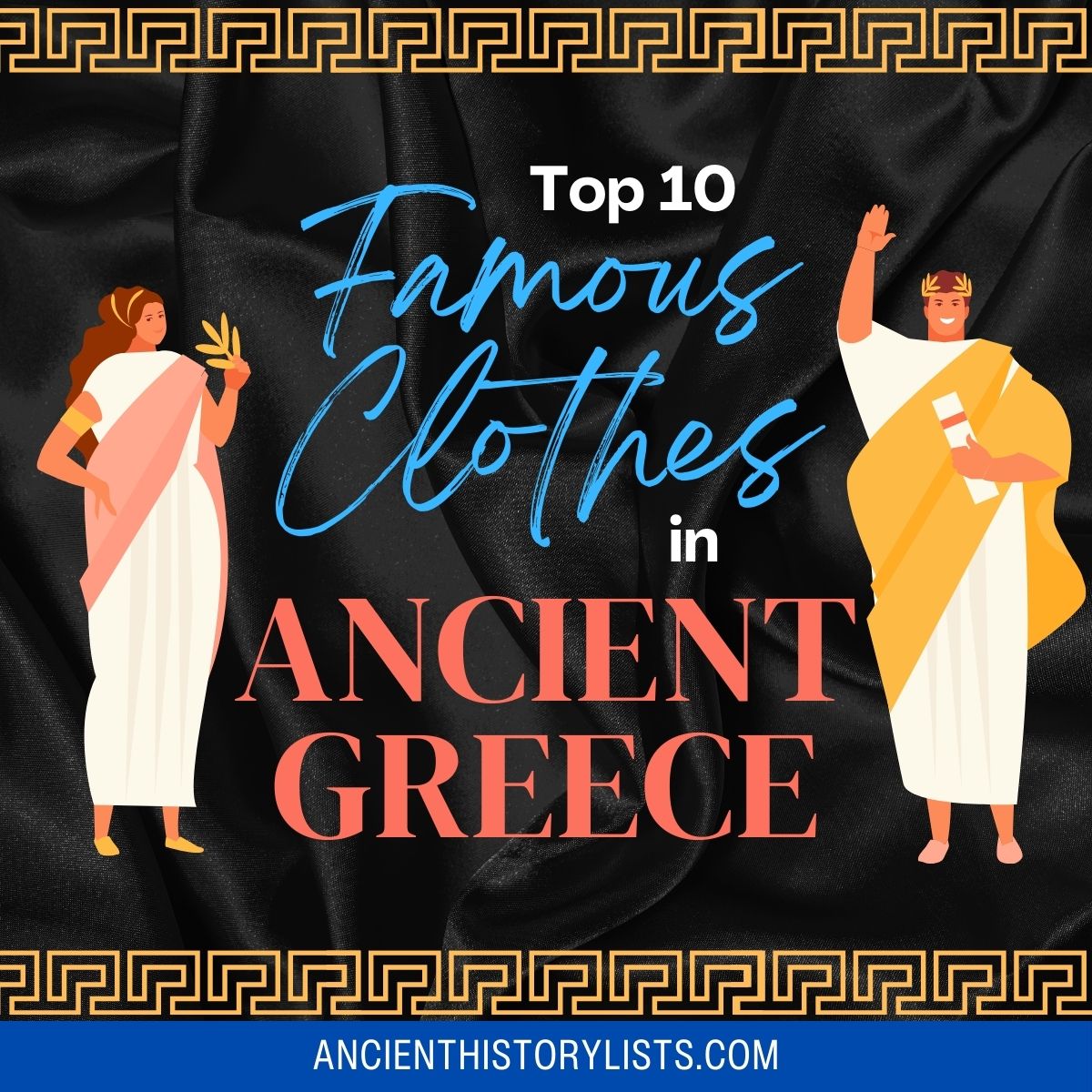
People in ancient Greece wore clothes that were home-woven and quite often very colorful, and one look tells us that those clothes were very much influenced by the outfits of the ancient Egyptians.
Here is a list of the top 10 famous garments in ancient Greece:
1. Chlamys

This piece of clothing was the ancient Greek version of the modern-day cloak. Made from a seamless, rectangular piece of woolen material about the size of a blanket, it was worn by pinning a fibulae on the right shoulder.
Since its first appearance in ancient Greek fashion, the chlamys saw gradual modifications in the way it was worn. Originally it was wrapped around the waist like a loincloth, but by the end of the fifth century BC it was worn over the elbows. It could be worn over other clothing, but was often the sole item of clothing for young soldiers and messengers, at least in Greek art.
It became the typical military outfit in Greece from the fifth to the third centuries BC. Soldiers would wrap it around the arm and even use it as a light shield in combat. The chlamys was in the spotlight up until the Greek-speaking Byzantine Empire which covered the eastern section of the Roman Empire.
2. Chiton
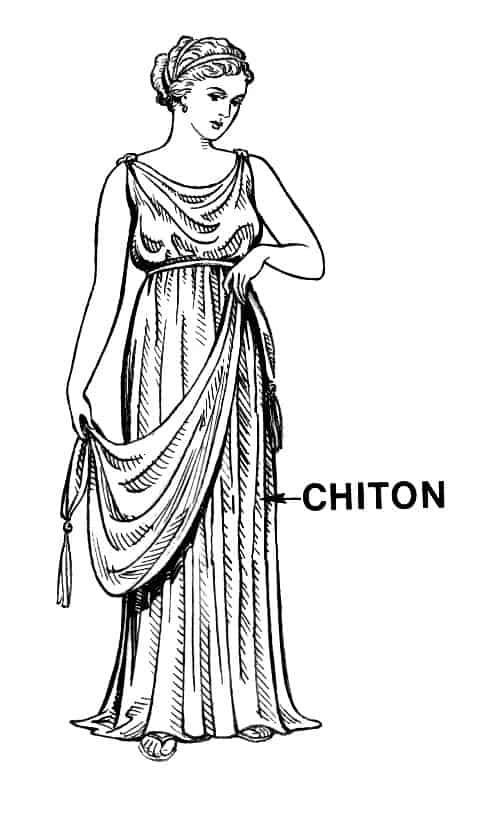
This piece of clothing was popularly worn both by men and women in ancient Greece as a sleeveless shirt, and was at the height of its popularity from the Archaic period (750–500 BC) to the Hellenistic period (323–30 BC).
This rectangular piece of linen was draped around the body in many different ways, the most popular method requiring fibulae, or brooches, to keep them in place on the shoulders and a belt at the waist. Chiton were of two types: the Doric chiton and the Ionic chiton.
The Doric style came on to the scene first. It was much simpler than the Ionic chiton, had no sleeves and was usually pinned, sewn, or buttoned at the shoulder. The Ionic style was made of a much wider piece of fabric, and was pinned, sewn, or buttoned all the way from the neck to the wrists and the excess fabric was gathered or girdled at the waist.
By the late Archaic period, Ionic chitons had become more common, especially for men. The sleeved chitons were much more popular among priests and actors.
3. Peplos
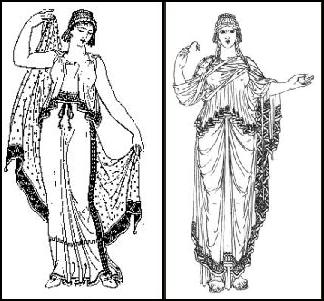
This body-length garment was the most common attire for women in ancient Greece.
Somewhere in the middle of the classical era, around 500 BC, it was indeed the most popular piece of clothing among women. It was a long, tubular cloth with the top edge folded down about halfway, so that the top of the tube was now draped below the waist and the bottom of the tube was at the ankle.
The garment was then gathered about the waist and the folded top edge pinned over the shoulders. The folded-down top of the tube gave the appearance of a second piece of clothing.
An interesting fact is that during ancient Greeks rituals, girls were chosen to make new peploi out of large pieces of fabric. This group of girls would spend nine months making the sacred peploi.
4. Himation
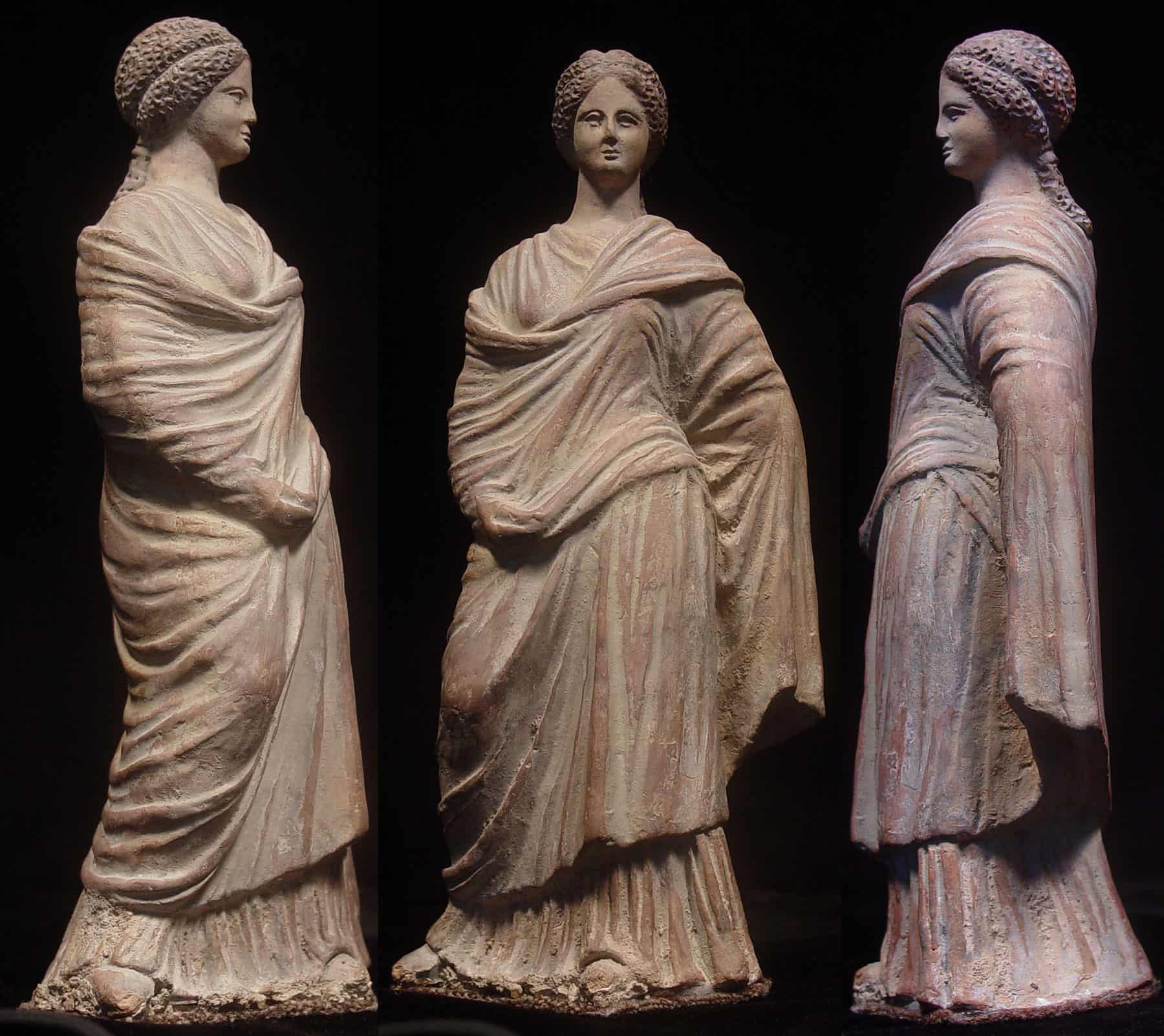
This particular piece of clothing first emerged somewhere around the sixth century BC. It was worn both by men and women, and had a similar purpose to that of the chlamys, to be used as a cloak and worn over the chiton.
Though no physical remnants of himations have been discovered, statues and decorations found on pottery suggest that these garments were often dyed bright colors and covered or bordered with intricate designs that were either woven into the fabric or painted on. These himations were especially used on long journeys.
Men usually wore the himation alone, but some preferred to wear it over a chiton. When men wore himations, they made sure to keep the edges from dragging on the ground because to do so was considered poor taste.
A bare left shoulder was taken as a sign of barbarism, so men used to carefully wrap it around their left shoulders. Greek women wore the himation in a variety of styles, the most popular of which was the symmetrical style where it was basically used as a larger veil.
5. Nudity
Now for those who you who are not familiar with this aspect of ancient Greece, nudity was quite common depending on the place and the occasion. For instance, the Spartans had rigorous codes for training and did their physical exercises naked.
Spartan women, as well as men, would sometimes be naked during public processions and festivals. In the case of women, this practice was designed to encourage virtue while the men were away at war.
During the classical Greek era, male nudity followed strict rules. Male athletes could participate nude in competitions such as the ancient Olympics, whereas women were barred from participating in any of the events.
6. Sandals
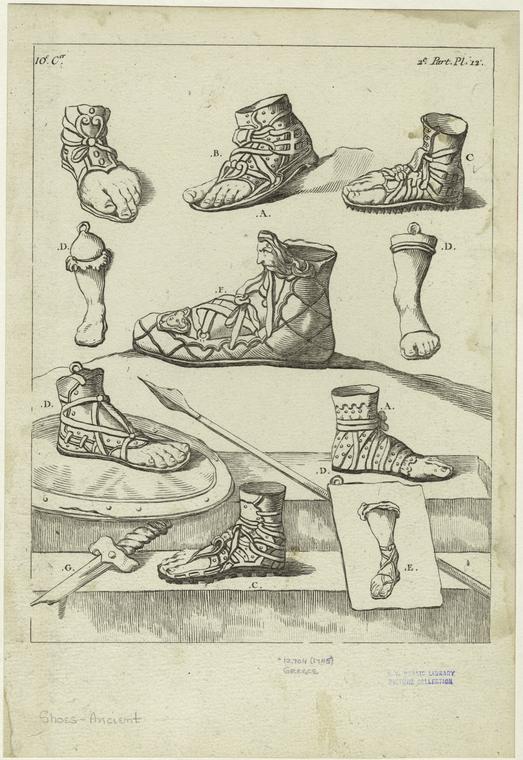
Footwear goes back much further than the ancient Greeks. While versatile and stylish options began to appear in the late Middle Ages, the shoes of ancient Greece were largely utilitarian.
At home, the Greeks would preferably walk around barefoot, but outside and while travelling they would wear a leather sandal typically known as a carbatine. This sandal originated way back in the beginning of the ancient Greek civilization.
A standard sandal featured a single piece of leather secured to the sole of the foot with laces which pulled the tops of the shoes together when tied, leaving the toes exposed. This type of footwear was worn until about 1000 AD.
In addition to the leather sandal, the Greeks also wore a boot-like piece of footwear called the cothurnus. This shoe was also made from leather with red straps in the front. Its boot-like shape could cover up the whole foot and it had thicker soles.
7. Strophion

Belts were common among the Greeks, and it was a fashion choice to put a belt around the waist to cinch in the chiton. Similarly, a belt could also be fastened around a loose-fitting chiton or chiton-like garment, especially around the area of the chest or below it.
This sort of belt was quite popular among women in ancient Greece. This breast belt or breast band was called the strophion. In a way, it was the ancient Greek version of the modern-day bra, worn as an outer layer instead of underneath the clothes.
8. The Veil
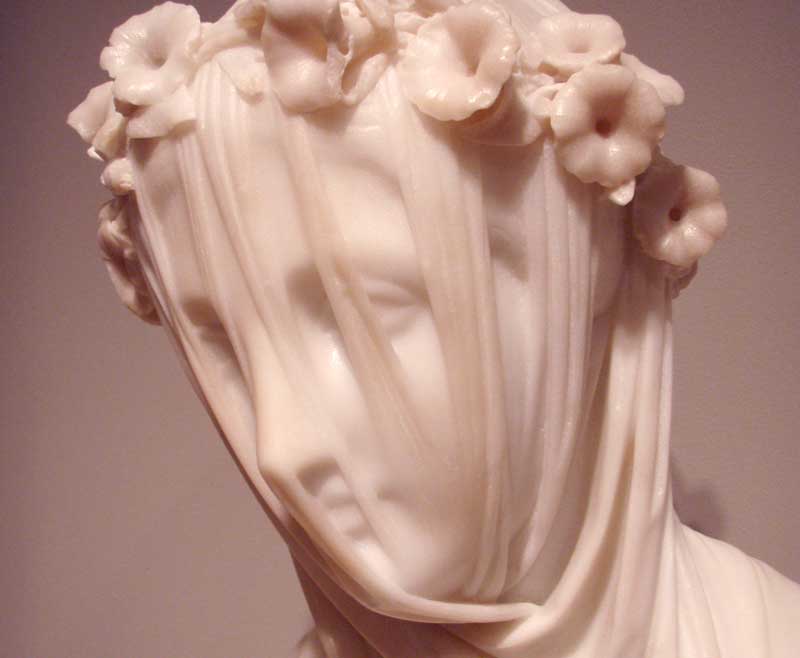
One would not conventionally associate the practice of wearing a veil in public with the women of ancient Greece as this custom has been more popularly associated with civilizations that have had Eastern influences. But according to a recent study, nothing was further from the truth, as it appears ancient Greek women routinely wore the veil as well.
The Greeks, who are quite often credited as the first to have embraced civic openness, can also be seen to have traditions towards women much like those of Eastern civilizations.
Classical Greek and Hellenistic statues sometimes depict Greek women with both their head and face covered by a veil. Popular historian Lloyd Llewellyn-Jones, who wrote one of the most detailed books on ancient Greek clothing, states that it was very common for women (particularly those with higher status) to cover their hair and face in public.
9. Epiblema
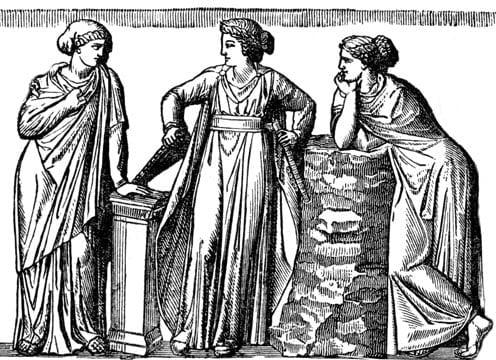
The epiblema was a piece of cloth that was worn over the peplos or chiton by the ancient Greeks. In other words, it was an ancient Greek shawl.
It was said to be more popular with the Doric chitons which had no sleeves, and it is thought that the epiblema was more popular among women, especially when strolling outside the comfort of their homes.
These epiblema were sewn in different colors and were most frequently donned in the fall. It is also noticeable that Greek senators and other officials associated with the government wore a certain style of epiblema during working hours.
10. Clothes for Children
Commonly, Greek children did not wear anything and would be naked most of the time, especially when they were within the confines of their own homes, which they were for most of the time. When they did wear clothing, it was usually a cloth diaper wrapped around their waists. It was quite unusual for children to wear full-on clothing such as chitons or footwear. Only once they reached school age, did they wear the same clothes as adults.
Conclusion
The people of ancient Greece adopted many styles of clothing from earlier civilizations and developed their own style to suit their physiology. From chitons and peploi to strophions and leather sandals, the culture of clothing has had a huge impact on fashions in the subsequent Roman Empire and many other Western civilizations that came after it.
Clothing like the chlamys cloak went on to have a huge impact on later Christian societies as Jesus Christ himself is often depicted as wearing a cloak very similar to the Greek chlamys.
You write: The people in ancient Greece grabbed the concept of already available clothings that came from civilizations prior to them, and creates a certain set of clothes that suited them,
Who were these prior civilisations that had developed such clothes? When you make a claim it is best to state the argument and proof, if you want to be believed. Since you do not offer a proof your statement and claim is untrue nad misleading.